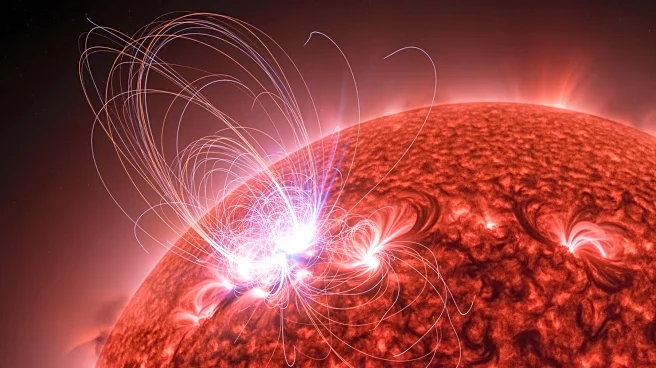What's Happening?
Researchers have made a groundbreaking discovery by identifying small-scale torsional Alfvén waves in the Sun's corona, providing the first direct evidence of these elusive magnetic waves. The discovery was made using the Daniel K. Inouye Solar Telescope
in Hawaii, which allowed scientists to observe these waves that are believed to play a crucial role in heating the Sun's outer atmosphere. The findings, published in Nature Astronomy, offer an explanation for why the Sun's corona reaches temperatures of millions of degrees, despite the surface being much cooler.
Why It's Important?
This discovery is a major advancement in solar physics, as it provides a long-sought explanation for the high temperatures of the Sun's corona. Understanding Alfvén waves and their role in heating the corona could have significant implications for predicting space weather, which can affect satellite operations, GPS systems, and power grids on Earth. The research also validates theoretical models of solar wave turbulence, offering new insights into the dynamics of the Sun's atmosphere. This breakthrough highlights the importance of advanced observational technology in solving complex scientific mysteries.
What's Next?
The discovery of torsional Alfvén waves opens new avenues for research into solar physics and space weather prediction. Scientists will continue to study these waves to understand how they propagate and dissipate energy in the corona. The Daniel K. Inouye Solar Telescope's capabilities will enable further exploration of wave physics in the solar atmosphere, potentially leading to new discoveries about the Sun's behavior. The research team anticipates that this finding will inspire additional studies and collaborations to deepen our understanding of solar dynamics.














